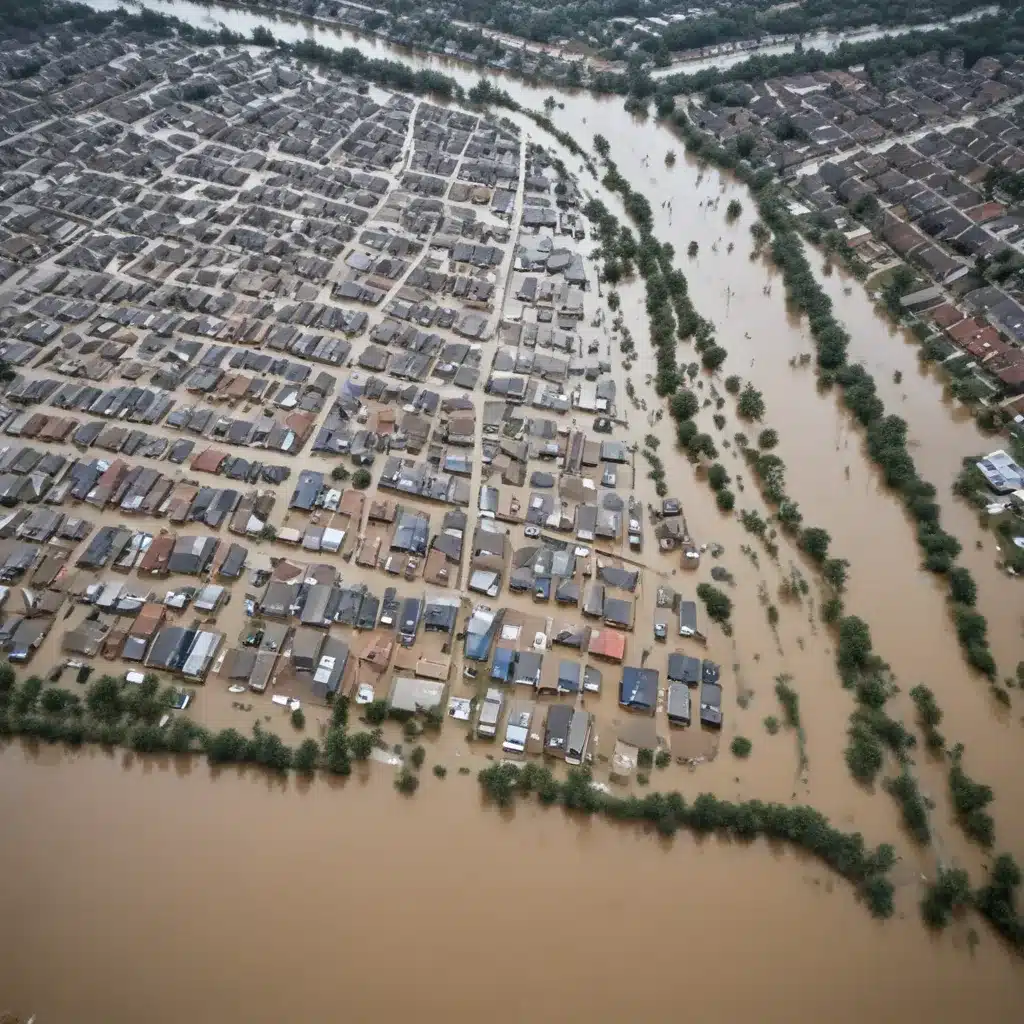
As an experienced flood control specialist, I’ve witnessed firsthand the critical importance of effective risk communication in enhancing public preparedness for flood events. With the increasing frequency and intensity of extreme weather patterns driven by climate change, the need for robust flood risk communication has never been more pressing.
Now, this might seem counterintuitive…
Understand the Role of Emotions in Risk Perception
Flood events are inherently stressful and emotionally charged situations. Research has shown that emotional responses can significantly impact how individuals process and respond to risk information. Emotions like anger, fear, and anxiety can shape message processing, influencing whether the audience engages with or avoids the information provided.
For instance, anxiety triggered by the uncertainty and lack of personal control associated with a looming flood can lead individuals to question existing beliefs, actively seek information, and be more susceptible to misinformation. Effective flood risk communication might want to consider these emotional dynamics and tailor messages accordingly.
Leverage Trusted and Credible Messengers
The source of risk information plays a crucial role in its effectiveness. Audience members are more likely to believe and act on messages delivered by sources they perceive as credible and trustworthy. This is particularly important in the context of flood risk, where individuals may be hesitant to heed warnings from distant, unfamiliar authorities.
Research suggests that local sources, such as community leaders, emergency responders, and trusted media figures, are often viewed as the most credible and relatable messengers. By involving these local partners in risk communication efforts, flood management professionals can leverage existing social and economic connections to enhance the reach and impact of their messages.
Moreover, the accessibility and interactivity of information sources matter. Audiences tend to gravitate towards convenient, familiar channels like television and social media, even if they are not the most trustworthy. Flood risk communicators should strive to increase the familiarity and convenience of trusted local resources before emergencies occur, allowing the public to become accustomed to these sources.
Understand the Role of Past Experiences
An individual’s past experiences with flood events can significantly shape their perceptions of current and future risks. Those who have directly or indirectly (e.g., through social media) experienced floods may have pre-existing mental models that can either facilitate or hinder their understanding of new flood risks.
For communities with limited prior exposure to flooding, risk communicators can use analogies or direct comparisons to help residents better comprehend the potential impacts. In areas with a history of frequent flooding, the emphasis should be on highlighting what is new or different, as the audience may already have a well-developed understanding of flood risk based on their personal experiences.
Address Disparities in Cognitive Abilities and Social Vulnerabilities
Effective flood risk communication requires acknowledging the diverse cognitive abilities and social vulnerabilities present within the target audience. Factors such as age, education, numeracy, and socioeconomic status can influence how individuals process and respond to risk information.
Presenting risk data in both numerical and non-numerical formats can enhance comprehension across a range of cognitive abilities. Similarly, using plain language and reducing message complexity can improve accessibility, especially for audiences with lower literacy or cognitive function, such as older adults.
It is crucial to recognize that certain communities are disproportionately affected by flooding due to systemic inequities and social determinants of health. These socially vulnerable populations, including low-income individuals, marginalized groups, and those with disabilities, often face higher flood exposure and limited resources to respond effectively.
Flood risk communication strategies might want to account for these disparities, ensuring that messages and resources reach the most vulnerable members of the community. Partnering with local organizations and community leaders can help identify and address the specific needs and barriers faced by these groups.
Leverage Formal and Informal Communication Channels
Effective flood risk communication requires an understanding of both formal and informal information-sharing networks within a community. While official warning systems and government websites play a crucial role, research has shown that people often rely on informal sources, such as family, friends, and neighbors, to learn about and share information during emergencies.
By mapping the flow of flood-related information within a community, communicators can optimize message design and placement to better reach the target audience. This may involve leveraging local social media influencers, community organizations, and trusted neighborhood networks to amplify and contextualize official warnings.
Embrace an Interdisciplinary Approach
Addressing the multifaceted challenges of flood risk communication requires an interdisciplinary approach, drawing on expertise from various fields, including communication research, behavioral science, hydrology, and community engagement.
As an example, the ongoing research project at RTI International and the University of Vermont is bringing together a diverse team to investigate the informal dynamics of flood information dissemination within communities. By understanding how flood-related knowledge and perceptions move within a community, this project aims to inform the implementation of new flood warning technologies, such as NOAA’s Flood Inundation Mapping (FIM) system, and enhance their effectiveness.
Conclusion
Effective flood risk communication is a critical component of comprehensive flood management strategies. By understanding the emotional, social, and cognitive factors that shape risk perceptions, leveraging trusted messengers, and addressing disparities in information access and processing, flood control professionals can empower communities to take proactive steps to mitigate the impacts of flooding.
As the challenges posed by climate change continue to evolve, investing in evidence-based flood risk communication practices can reduce the burdens on public health and emergency response systems, ultimately saving lives and protecting property. Through a collaborative, interdisciplinary approach, we can enhance public preparedness and build more resilient communities in the face of increasing flood risks.
For more information on the latest flood control technologies, sustainable water management practices, and regulatory frameworks, I encourage you to visit Flood Control 2015. Our team of experts is dedicated to providing comprehensive resources and innovative solutions to help communities navigate the complexities of flood risk management.
Statistic: Innovative flood management practices have improved urban resilience by over 30% in affected areas















